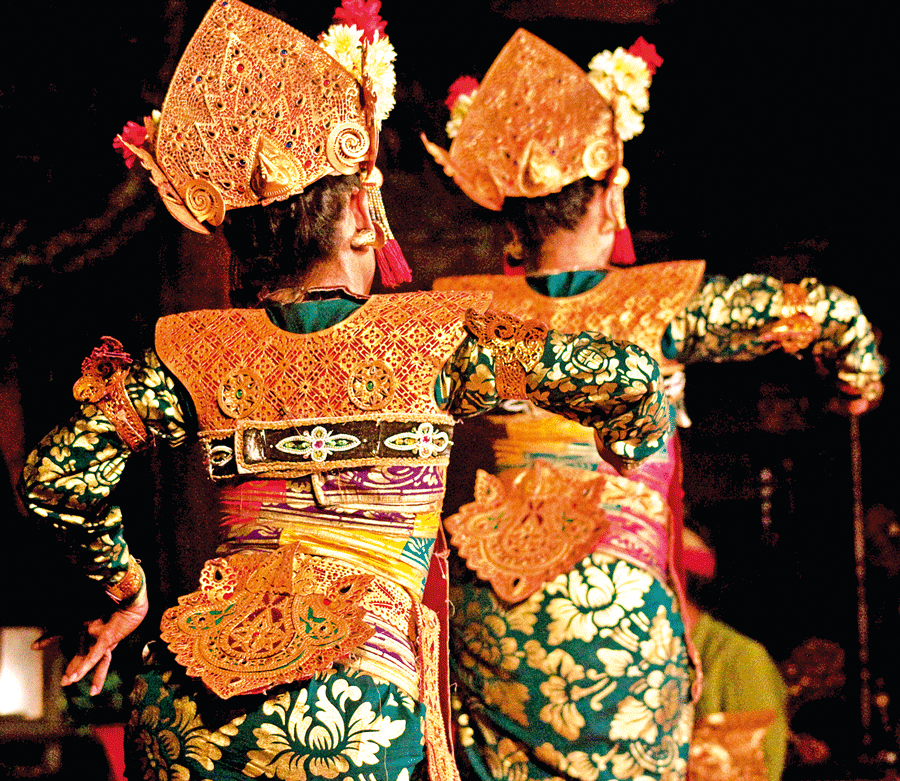Like everything, wise Balinese men will tell you, even their island too is subjected to the law of the Rwabhinneda, the complementary opposites. Light and Darkness; male and female; good and bad; serious and funny, and so forth.

I spend much of my writing time talking about the positive, or funny sides of Balinese culture, while other, birds of darkness, prefer writing about drugs, killings and cheating. It exists. But if many Westerners like to emphasise what is bad or does not work – which is paradoxically part of their democratic DNA, I try to do the opposite; or, when I criticise, try to emphasise the weird or even funny side of what I denounce.
I don’t know whether what I denounce below is funny, but it certainly occurs more often than what most Balinese would like to acknowledge: the encounter of sex and culture.
The story is Kemprot’s. Who is Kemprot, you are probably asking? A guide of a special kind. A second generation beach boy. He spoke English with the right Australian drawl, but his frequency of use of the “f” word and its derivatives did not get him access to the best kind of Down-Under visitors. Morality was not, to be true, Kemprot’s daily diet. A one-time tourists hassler, he had in his youth occasionally been a drug pusher, but his heydays had been as a gigolo. Even now, older, he could provide, even if the competition was getting harder. As an ex-beau, his “women” were with time more and more wrinkled. But he did not care. He now made do with what was available. Whatever. For the right buck.
So, when no females were available, he would be an occasional pimp. Finding a male tourist in a bar and proposing him a quick shot in Mlanjong or elsewhere. He would of course get his share of the spoils. All this, of course, did not prevent him from being active at his village youth association and being shy with tourists when he needed to be. This had the banality of the life of someone well-versed in the oddities of tourism.
Yet, this time, Kemprot was really pissed off. He knew, albeit vaguely, that what puzzled him now was a moral problem. “
“They want Balinese girls,” he said, while explaining to his Balinese friend Nang Kocong, “And no ordinary ones, but Balinese legong dancers”.
“Wah, these salesmen on Incentive Tours know all the tricks already”, commented Kocong with a laugh. They don’t want imported ‘merchandise’ -meaning girls- from East-Java anymore; they want the real thing”.
“Ya, ya,” Kemprot added, “they want Balinese girls; but I am not ready to get them Balinese girls,” he blurted out in a bout of ethnic solidarity.
They remained still for a while, each pondering on his own thoughts, while puffing avidly on a kretek cigarette.
“I have an idea,” said suddenly Kocong before whispering into his friend’s ear. Kemprot listened intently, then laughed. It was indeed a very good idea.
Four hours later, in a nondescript Balinese compound of Kuta, all the implements were ready: costumes, make up, and all the participants were present, girls included, though not Balinese of course. Mrs. Gusti Ayu, the Balinese juru payias –beauty care specialist- was putting a small tip of tooth-paste on the brow of one of the two girls. This was the third eye, the symbol of ubiquitous knowledge! Mrs. Gusti Ayu was used to making up and dressing women from all strata of society, but these two were laughing too loudly for her taste. Kemprot himself was embarrassed. He usually hid his trade from his own people.
After the make up came the dressing. This was really fun. Never had the girls been ribboned and fastened in such a way. They were used to faster clothes: faster to take off. Anyway, after half an hour of giggling and jesting, they were laced in a legong costume, made up with a perfect make up, and, we are obliged to acknowledge, quite pretty. They were not dressed this way for a photography session as the ever naïve Mrs. Gusti Ayu had been made to believe. Nor were they ready to perform the legong dance. Their dance would predate the legong by many millenniums.
It was for sex indeed that they had donned this attire. Soon, right on time, Kemprot’s two guests, the “Incentive Tour” salesmen, arrived. Neatly dressed, even though long-nosed and black-haired, they were all smiles. Their wildest dreams would be fulfilled. They would hold in their arms, at once and the same time, a Balinese girl and a legong dancer. Sex and culture. What a story to tell back home.
The taxi driver arrived in due time, opened the doors, and off they went. Did they go to a villa, or an elite brothel. What happened to the laces of the legong costumes? Did they perform a tap dance or a pas de deux. I did not inquire, and Kemprot never told me. Was he ashamed?
I am, and he should have been. We should in fact all be. Even since the rape of the Sabines by the Romans, which ended in marriage, and Sita’s kidnapping by Rahwana, which ended in war, males have always granted themselves the right to sexually ill-treat alien women –desire them against their will, purchase them, rape them etc. The only important change now from those ancient times is that the dollar/Euro/Yen/Yuan has sometimes replaced the sword.






